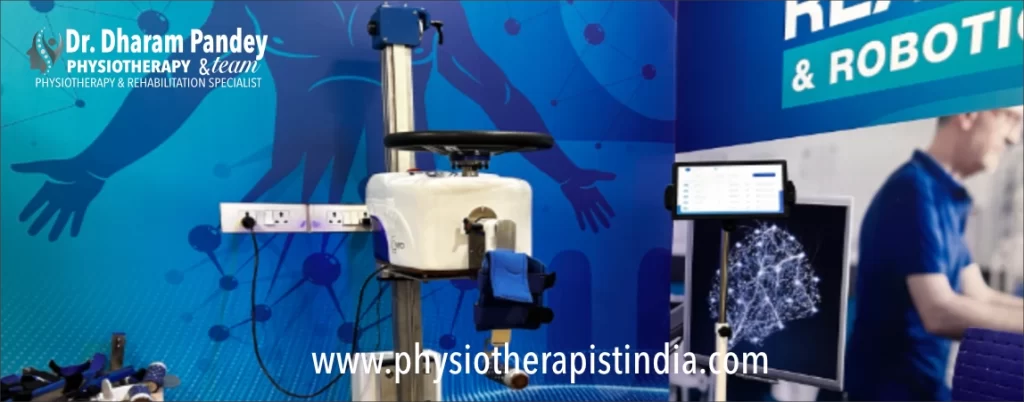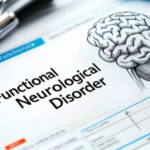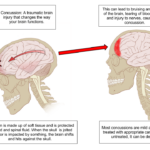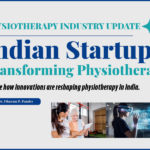
The Power of Technology in Neurophysiotherapy: Revolutionizing Rehabilitation and Optimizing Outcomes
In recent years, healthcare has undergone a transformative journey with the integration of cutting-edge technologies. Neurophysiotherapy, a specialized branch of physiotherapy focusing on the rehabilitation of individuals with neurological conditions, has seen significant advancements as a result. These innovations have enhanced traditional therapeutic methods, offering new hope for patients and redefining recovery possibilities.
From Virtual Reality (VR) to wearable devices, mobile applications, robotics, and artificial intelligence, technology is reshaping the neurorehabilitation landscape. This comprehensive article explores the pivotal role of technology in neurophysiotherapy, including its applications, benefits, challenges, and the future of this dynamic field.
Understanding Neurophysiotherapy: A Deeper Dive
Neurophysiotherapy is a specialized branch of physiotherapy dedicated to improving the lives of individuals who suffer from neurological conditions. These conditions affect the central and peripheral nervous systems and often lead to impairments in movement, coordination, muscle strength, and balance. The goal of neurophysiotherapy is not only to restore physical function but also to enhance the overall quality of life by addressing both physical and cognitive challenges.
Key Neurological Conditions Addressed in Neurophysiotherapy
- Stroke:
Stroke occurs due to the disruption of blood flow to the brain, resulting in damage to brain tissue. This can lead to partial paralysis, muscle weakness, impaired coordination, and difficulties in speech and cognition. Neurophysiotherapy focuses on restoring motor control, improving balance, and enhancing daily functional activities in stroke survivors. - Parkinson’s Disease:
A progressive neurodegenerative disorder, Parkinson’s disease affects movement regulation, often causing tremors, stiffness, and slow movements. Neurophysiotherapy helps manage these symptoms through targeted exercises that improve gait, posture, and balance, as well as strategies to maintain independence in daily activities. - Multiple Sclerosis (MS):
MS is a chronic autoimmune disease that affects the central nervous system, leading to symptoms such as muscle weakness, fatigue, and poor coordination. Neurophysiotherapy helps patients with MS by addressing mobility challenges, reducing spasticity, and improving endurance through tailored exercise programs. - Spinal Cord Injuries (SCI):
Damage to the spinal cord can result in partial or complete loss of motor and sensory function below the injury site. Neurophysiotherapy plays a vital role in retraining muscles, improving strength and coordination, and enhancing mobility using adaptive techniques and assistive devices. - Traumatic Brain Injuries (TBI):
TBIs often result from accidents, falls, or blows to the head, causing cognitive impairments, muscle weakness, and balance issues. Neurophysiotherapists work to restore lost motor skills, improve coordination, and rebuild independence in activities of daily living (ADLs).
The Science Behind Neurophysiotherapy: Neuroplasticity
At the heart of neurophysiotherapy lies the concept of neuroplasticity, which refers to the brain’s remarkable ability to reorganize itself by forming new neural connections in response to injury or changes in the environment. Neuroplasticity enables the undamaged areas of the brain to take over functions previously controlled by damaged regions.
Through repetitive and task-specific exercises, neurophysiotherapy stimulates neuroplasticity, helping patients regain control over movements and functions lost due to neurological conditions. These interventions aim to:
- Strengthen existing neural connections to improve motor and sensory functions.
- Encourage the development of new neural pathways for compensatory strategies.
- Prevent secondary complications, such as muscle atrophy and joint stiffness, that can arise from prolonged inactivity.
Traditional Therapeutic Techniques in Neurophysiotherapy
- Guided Exercises:
Tailored to the patient’s specific needs, these exercises focus on improving strength, range of motion, and coordination. For example, stroke patients may perform repetitive arm or leg movements to retrain motor control. - Manual Therapy:
This includes hands-on techniques such as joint mobilization, soft tissue manipulation, and proprioceptive neuromuscular facilitation (PNF) to reduce muscle stiffness, improve circulation, and enhance joint mobility. - Balance Training:
Balance and postural control are critical for preventing falls and improving mobility. Therapists use tools like balance boards, wobble cushions, and stability exercises to enhance the patient’s equilibrium and core strength. - Gait Training:
For patients with walking impairments, gait training focuses on improving stride length, symmetry, and walking speed. Techniques may involve assistive devices like parallel bars, walkers, or body-weight support systems. - Functional Training:
Patients are guided through activities of daily living, such as standing, sitting, and reaching, to rebuild independence. These tasks are often broken down into smaller components and practiced repeatedly.
The Role of Technology in Enhancing Traditional Methods
While traditional approaches remain indispensable, integrating technology into neurophysiotherapy has opened new avenues for optimizing rehabilitation outcomes. Advanced tools such as motion sensors, robotics, virtual reality (VR), and mobile applications augment these conventional methods by making therapy sessions more interactive and data-driven.
- Enhanced Engagement: Technologies like VR provide immersive experiences that motivate patients to participate actively in therapy, transforming repetitive exercises into enjoyable and meaningful tasks.
- Objective Monitoring: Wearable devices and motion sensors capture real-time data on movement and performance, enabling therapists to track progress more accurately and adjust interventions accordingly.
- Personalization: Robotics and AI-driven tools allow for highly customized therapy plans tailored to the patient’s specific deficits and goals.
- Remote Accessibility: Mobile apps and tele-rehabilitation platforms bridge the gap for patients unable to visit clinics regularly, ensuring continuity of care from home.
Neurophysiotherapy, at its core, is about empowering patients to regain control over their lives. By combining evidence-based traditional techniques with state-of-the-art technologies, this field is redefining the possibilities for recovery and offering new hope to individuals facing the challenges of neurological conditions.
The Role of Technology in Neurophysiotherapy
Technological advancements have played a transformative role in neurophysiotherapy, enhancing rehabilitation outcomes for patients with neurological conditions. By integrating innovative tools like Virtual Reality (VR), wearable devices, mobile applications, robotics, and tele-rehabilitation, neurophysiotherapy is becoming more efficient, personalized, and accessible. Here’s a closer look at how each technology contributes to the rehabilitation process:
1. Virtual Reality (VR): Immersive Rehabilitation
Virtual Reality (VR) offers a highly engaging, immersive therapeutic experience by creating virtual environments tailored to patients’ specific rehabilitation needs. Unlike traditional therapies, which might be passive, VR encourages active participation through simulated real-world scenarios. These scenarios can be designed to improve motor skills, balance, coordination, and cognitive functions, thus accelerating recovery.
Applications of VR in Neurophysiotherapy:
- Motor Rehabilitation:
VR helps patients practice repetitive movements in a fun, engaging way. Activities like reaching, grabbing, walking, or climbing stairs can be replicated in the virtual world, allowing patients to train without physical limitations. This repetitive practice is crucial for neural reorganization in the brain, fostering improved motor function. - Balance Training:
Virtual environments can simulate challenging situations such as walking on uneven surfaces, maintaining balance in dynamic conditions, or recovering from simulated falls. This helps patients with neurological conditions, such as stroke or Parkinson’s disease, practice balance safely and progressively. - Cognitive Rehabilitation:
VR can also address cognitive impairments by engaging patients in tasks that target memory, attention, problem-solving, and executive function. For instance, a VR game might require patients to remember the order of objects or follow a complex sequence of commands, boosting cognitive processing while integrating physical movement.
Evidence of Effectiveness:
Studies have demonstrated VR’s positive impact on rehabilitation. For example, an eight-week VR program for stroke patients led to a 30% improvement in balance and gait, highlighting its potential for motor function recovery. Furthermore, studies on patients with Parkinson’s disease show that VR can improve coordination and reduce symptoms of rigidity and bradykinesia.
Advantages of VR:
- Safe Environment for Complex Tasks: VR allows patients to practice tasks that would otherwise be unsafe, such as walking in crowded spaces or recovering from a fall.
- Increased Motivation: The interactive and immersive nature of VR often enhances patient engagement and adherence to therapy, leading to better outcomes.
- Personalization: VR programs can be tailored to the individual’s needs and recovery goals, providing a customized rehabilitation experience.
2. Wearable Devices: Data-Driven Insights
Wearable devices, such as motion sensors, smart gloves, and insoles, provide continuous feedback on a patient’s movement, posture, and performance during rehabilitation. These devices allow both patients and therapists to track progress in real-time, adjusting therapy programs based on collected data.
Key Applications:
- Gait Analysis: Wearable sensors track walking patterns, helping to identify abnormalities like limp or uneven stride length. This data can be used to guide rehabilitation and improve walking stability.
- Postural Correction: Devices like smart vests or posture sensors provide immediate alerts when patients adopt poor posture, promoting better alignment and reducing the risk of musculoskeletal complications.
- Exercise Monitoring: Wearables ensure exercises are performed correctly, tracking intensity, range of motion, and repetitions to ensure the right therapeutic approach.
Examples of Wearable Devices:
- Accelerometers and Gyroscopes: These devices measure the dynamics of a patient’s movements, providing valuable information about muscle performance and coordination.
- Smart Gloves: Used for hand rehabilitation, these gloves can detect hand movements, such as grip strength or finger dexterity, helping patients regain fine motor control.
- Smart Insoles: These insoles measure pressure distribution during walking, identifying imbalances in the foot that can be corrected through targeted exercises.
Impact:
Research shows that patients with Parkinson’s disease, for example, saw a 40% improvement in gait stability when wearable devices were integrated into their therapy program. These devices offer precise, real-time feedback that improves the accuracy of interventions.
3. Mobile Applications: Accessible Therapy Anywhere
Mobile applications have revolutionized accessibility to neurophysiotherapy by allowing patients to engage in therapeutic exercises remotely. These apps empower patients to continue their rehabilitation at home, providing flexibility and convenience.
Features of Rehabilitation Apps:
- Exercise Libraries: Many apps provide an extensive library of guided exercises, allowing patients to follow instructions and videos to perform exercises correctly.
- Progress Tracking: Patients can track their improvements, set goals, and receive feedback, helping them stay motivated and focused on their recovery.
- Reminders: Push notifications remind patients of therapy schedules, promoting adherence to their rehabilitation plans.
Examples:
- RehabCoach: This app offers personalized stroke recovery plans that guide patients through exercises and monitor progress over time.
- Parkinson’s Buddy: Specifically designed for individuals with Parkinson’s disease, this app helps track motor symptoms like tremors and rigidity, offering tailored exercises and reminders.
- MoveIt: A gamified app that turns rehabilitation exercises into fun challenges, enhancing engagement and compliance.
Advantages:
- Increased Accessibility: These apps make therapy accessible even to patients in remote areas, reducing the need for frequent clinic visits.
- Remote Monitoring: Therapists can monitor progress remotely through data collected by the app, adjusting treatment plans as needed.
4. Robotics: Precision and Support
Robotic technology has significantly advanced neurophysiotherapy by providing precision, consistency, and support during rehabilitation exercises. Robotic devices can assist patients in performing movements that they may struggle to execute on their own.
Types of Robotic Devices:
- Exoskeletons: Wearable robotic suits that assist with walking and standing. These devices are particularly beneficial for patients with spinal cord injuries or severe neurological impairments.
- Robotic Arms: These devices aid in hand rehabilitation by assisting with reaching, grasping, and manipulating objects. They help patients regain fine motor skills.
- Robotic Treadmills: These devices guide patients through walking exercises, allowing them to practice gait training with added support.
Clinical Impact:
Patients with stroke using robotic exoskeletons have shown a 50% increase in walking speed compared to those receiving traditional physical therapy. These devices allow for consistent, high-intensity training that can be customized to the patient’s progress.
Benefits of Robotics:
- Consistency: Robotics provide repetitive, high-intensity training, which is essential for motor learning.
- Therapist Support: Robotic devices can reduce the physical strain on therapists, allowing them to focus on overseeing patient progress rather than performing the physical tasks themselves.
- Precise Feedback: Robotics offer detailed data on a patient’s performance, helping therapists track progress accurately.
5. Tele-Rehabilitation: Remote Care Revolution
Tele-rehabilitation allows for remote delivery of neurophysiotherapy, breaking down barriers such as geographical limitations, mobility issues, and patient convenience.
Applications of Tele-Rehabilitation:
- Live Video Consultations: Patients can consult with their therapists in real-time via video calls, ensuring continuous support and guidance.
- Remote Monitoring: Devices like motion-sensing cameras can track patient performance, providing therapists with real-time data to adjust therapy plans remotely.
- Home-Based VR Systems: Patients can use VR headsets at home to engage in immersive therapy sessions without needing to visit a clinic.
Success Stories:
During the COVID-19 pandemic, many neurophysiotherapy patients were able to continue their rehabilitation through tele-rehabilitation, with outcomes comparable to in-person therapy. Tele-rehabilitation has proven to be effective in managing chronic conditions like stroke and Parkinson’s disease, maintaining continuity of care and improving patient adherence.
Technology is transforming neurophysiotherapy, offering patients more personalized, accessible, and engaging treatment options. From VR that enhances motor and cognitive rehabilitation, to wearable devices that provide real-time feedback, these innovations help bridge the gap between clinic-based and home-based care. By integrating robotics, mobile apps, and tele-rehabilitation, neurophysiotherapy is becoming a more holistic, patient-centered field, promoting faster recovery, better outcomes, and improved quality of life for individuals with neurological conditions.
Why Technology Matters in Neurophysiotherapy
Technology is playing an increasingly pivotal role in neurophysiotherapy, offering solutions that address the unique challenges of treating patients with neurological conditions. With the ability to enhance engagement, provide personalized care, and improve accessibility, technology is driving efficiency and effectiveness in rehabilitation. Here’s a deeper look at why technology is crucial in neurophysiotherapy:
1. Enhanced Engagement
One of the biggest challenges in neurophysiotherapy is maintaining patient motivation. Traditional therapies often involve repetitive exercises that can become monotonous, leading to decreased engagement. However, technology has revolutionized this aspect of rehabilitation through interactive tools like Virtual Reality (VR), gamified applications, and mobile apps.
- VR Therapy: By immersing patients in virtual worlds where they engage in exercises, VR stimulates multiple senses and makes therapy more interactive and enjoyable. Patients can practice activities like walking, reaching, and balancing in a fun and safe environment, which motivates them to continue therapy.
- Gamified Apps: Mobile apps like MoveIt turn rehabilitation into a game, offering rewards or challenges as patients complete exercises. This gamification keeps patients engaged, particularly those who might otherwise find therapy boring or tiresome.
- Interactive Feedback: Devices like smart gloves or motion sensors provide immediate visual or auditory feedback, reinforcing the success of movements and encouraging patients to keep going. This sense of accomplishment can drive long-term adherence to therapy plans.
Impact:
Enhanced engagement through these interactive and immersive tools has been shown to significantly improve adherence to treatment plans, leading to better rehabilitation outcomes. By turning the therapeutic process into a more dynamic experience, technology ensures that patients remain committed to their recovery.
2. Personalized Care
Every patient’s neurological condition is unique, and so is their rehabilitation journey. Technology enables personalized care by providing real-time data that helps therapists tailor interventions to each individual’s specific needs.
- Wearable Devices: Devices like smart gloves, motion sensors, and smart insoles provide real-time feedback on movements, posture, and gait. This data helps therapists understand how patients are performing specific tasks and adjust their interventions accordingly. For example, if a wearable sensor detects that a patient’s gait is unsteady, the therapist can modify the rehabilitation program to focus more on balance training.
- Data-Driven Insights: Advanced data analytics tools integrated with these devices can track a patient’s progress over time, identifying patterns and areas that need improvement. These insights allow for dynamic adjustments to the therapy plan, ensuring that the approach remains effective and challenging without being overwhelming.
- Tailored Therapy Programs: Virtual Reality (VR) systems can be personalized to a patient’s abilities and goals. For example, a VR game can be adjusted to target specific motor skills or cognitive functions, progressively increasing in difficulty as the patient improves.
Impact:
This level of personalization results in more targeted interventions, improving both the efficiency and effectiveness of neurophysiotherapy. As a result, patients are likely to experience faster recovery and improved outcomes.
3. Improved Accessibility
Technology has the potential to democratize access to rehabilitation by making therapy more accessible to underserved populations, especially those in remote or rural areas or those with limited mobility. Mobile applications and tele-rehabilitation services have significantly expanded access to neurophysiotherapy.
- Mobile Applications: With the rise of smartphones and tablets, mobile applications allow patients to receive guided therapy and track progress at home. Apps like RehabCoach provide personalized recovery plans for stroke patients, and Parkinson’s Buddy helps monitor symptoms and offers exercises for those with Parkinson’s disease.
- Tele-Rehabilitation: Tele-rehabilitation allows patients to receive therapy remotely through video consultations, motion-sensing technologies, and home-based VR systems. This is especially valuable for patients who are unable to visit clinics due to geographical constraints or physical limitations.
- Global Reach: Mobile apps and tele-rehabilitation systems have no geographical boundaries, which is especially significant for those living in rural or isolated areas where access to specialized therapists may be limited.
Impact:
Technology breaks down barriers like distance and mobility, allowing individuals in underserved areas or those with mobility impairments to receive high-quality therapy remotely. This increased accessibility can lead to better patient outcomes by making therapy more consistent and widely available.
4. Objective Monitoring
In traditional neurophysiotherapy, assessing patient progress is often based on subjective observations made by therapists. While these observations are valuable, they can sometimes be limited in accuracy and consistency. Technology brings objective monitoring to the forefront, enabling quantitative tracking of patient performance.
- Motion Sensors and Wearables: Devices like accelerometers, gyroscopes, and smartwatches collect real-time data on a patient’s movement dynamics. This data can include details on the speed, range of motion, gait patterns, and muscle activation. This objective data is invaluable in tracking improvements or setbacks in rehabilitation.
- Data Analytics: With sophisticated software, this collected data can be analyzed to provide measurable outcomes, such as improvements in walking speed, balance, and coordination. Therapists can use this data to adjust treatment plans based on precise, evidence-based information.
- Tracking Functional Abilities: For patients with conditions like Parkinson’s disease or stroke, technologies can help assess functional abilities like mobility, muscle strength, or cognitive function using objective metrics.
Impact:
By offering precise, objective data, technology allows therapists to track progress more accurately and identify areas that require additional focus. This ability to monitor therapy effectiveness in real-time enables faster adjustments, improving the overall quality of care.
5. Efficient Resource Utilization
One of the key challenges in healthcare is maximizing resource efficiency, both in terms of time and personnel. Technology offers solutions that reduce the workload on therapists, allowing them to focus on the most complex tasks while ensuring high-quality care for their patients.
- Robotic Devices: Robotic exoskeletons or robotic arms assist patients with movement, providing consistent, high-intensity training without requiring continuous therapist involvement. This enables therapists to manage more patients and focus on the more nuanced aspects of care.
- Automated Feedback: Wearables and VR systems can give patients immediate feedback, reducing the need for therapists to constantly intervene. This allows therapists to manage their time more efficiently and focus on customizing care based on the data collected by these devices.
- Virtual Reality and Robotic Assistance: Devices like robotic treadmills and VR systems can guide patients through exercises without requiring direct therapist interaction for every session. These tools provide structured and repetitive training, which is crucial for neuroplasticity, without needing constant therapist supervision.
Impact:
By automating repetitive tasks and enabling remote monitoring, technology optimizes the use of therapists’ time and reduces the physical strain on them. This not only makes healthcare more cost-effective but also ensures that patients receive consistent, high-quality care even with limited therapist availability.
The integration of technology in neurophysiotherapy significantly enhances the rehabilitation process by improving patient engagement, personalizing care, increasing accessibility, providing objective monitoring, and optimizing resource utilization. With these advancements, neurophysiotherapy is becoming more effective, patient-centered, and efficient. The use of VR, wearable devices, mobile apps, robotics, and tele-rehabilitation has the potential to not only improve the quality of care but also transform the rehabilitation experience for both patients and healthcare providers.
Challenges and Limitations
Despite its benefits, integrating technology in neurophysiotherapy comes with challenges:
- Cost: Advanced devices can be expensive.
- Training: Therapists need specialized training to use these tools effectively.
- Access: Limited availability of internet and compatible devices in some regions.
- Variability: Responses to tech-based therapy vary among patients.
The Future of Neurophysiotherapy
The next decade promises even greater advancements:
- Artificial Intelligence (AI): Predictive analytics for optimized care plans.
- Brain-Computer Interfaces (BCIs): Direct communication between the brain and external devices for severe impairments.
- Augmented Reality (AR): Blending virtual elements with real-world therapy.
- Portable Devices: Cost-effective and compact solutions for broader access.
Conclusion
Technology is redefining the scope of neurophysiotherapy, enabling remarkable outcomes for patients and therapists alike. From immersive VR experiences to precise wearable sensors, accessible mobile apps, and advanced robotics, these tools are paving the way for a brighter future in neurorehabilitation.
While challenges remain, the continued evolution of technology promises personalized, accessible, and effective therapies for all. Embracing these innovations will transform lives, unlocking the full potential of recovery for individuals with neurological conditions.
With technology as a catalyst, the boundaries of neurophysiotherapy are expanding, creating a world where hope, progress, and healing are within everyone’s reach.





